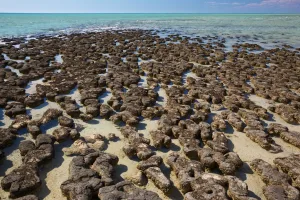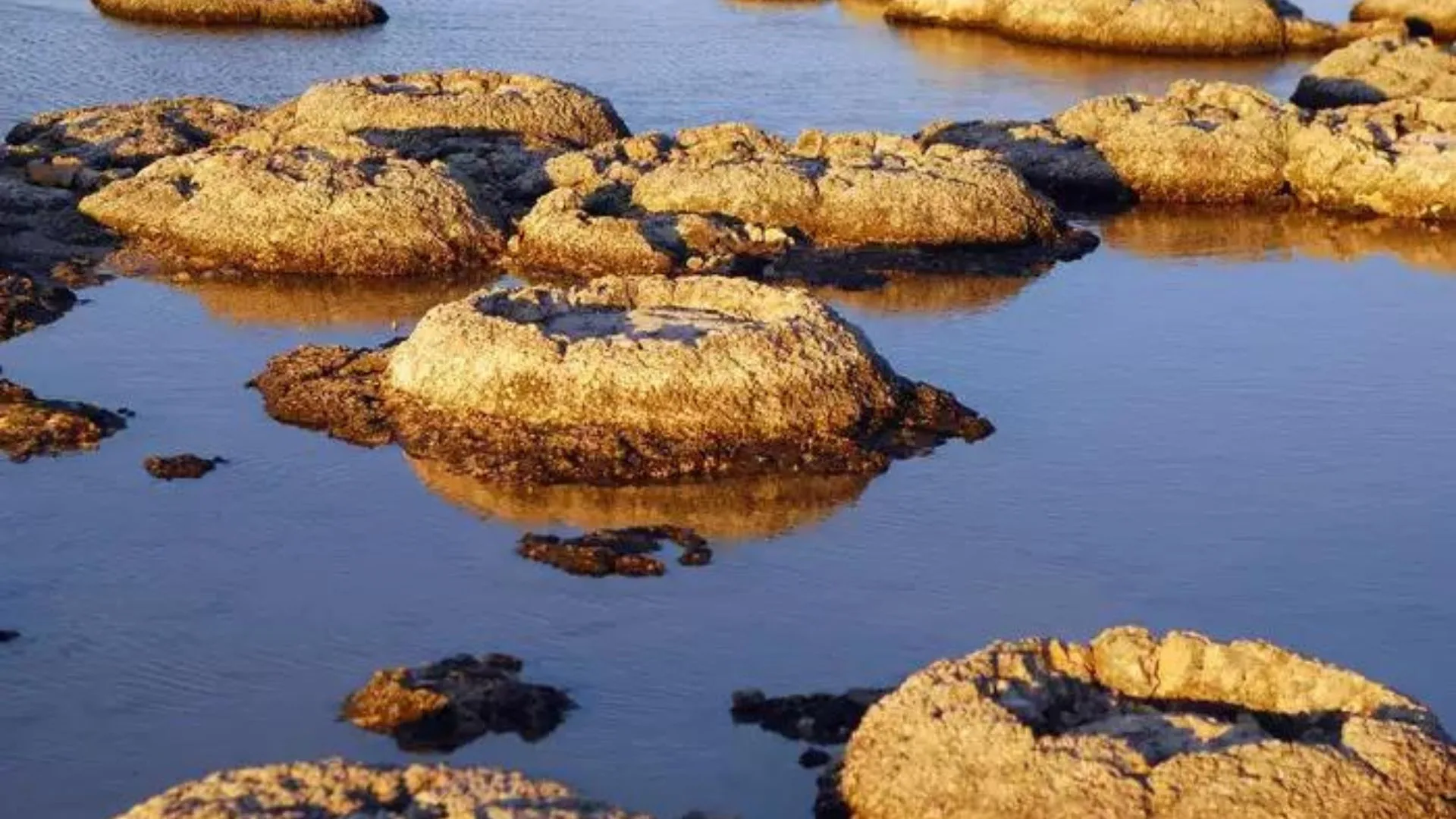In a remarkable intersection of ancient biology and modern environmental stewardship, Saudi Arabia’s Sheybarah Island has unveiled one of nature’s oldest and most fascinating secrets: stromatolites. These “living rocks,” formed by cyanobacteria over billions of years, are not just geological formations but are living relics of Earth’s primordial history. Nestled in the pristine waters of Al-Wajh Lagoon, these stromatolites offer an unparalleled glimpse into the early conditions of our planet, capturing the interest of scientists, environmentalists, and tourists alike. This extraordinary find not only enriches our understanding of early life on Earth but also positions Sheybarah Island as a significant site for scientific research and sustainable tourism.

The stromatolites off the coast of Saudi Arabia’s Sheybarah Island have captivated scientists and environmentalists, offering an extraordinary window into the origins of life on Earth. These ancient “living rocks,” among the earliest forms of life, are gaining international acclaim for their distinct composition and immense historical importance.
Located within the pristine waters of Al-Wajh Lagoon, Sheybarah Island is home to a spectacular array of stromatolites, layered sedimentary formations created by cyanobacteria. These microbial mats have thrived in the shallow waters for billions of years, capturing sediments and creating intricate structures that resemble layer cakes. Their presence on Sheybarah Island offers an invaluable window into the early conditions of our planet, where similar formations contributed to the creation of Earth’s oxygen-rich atmosphere.
The discovery of these stromatolites has been spearheaded by a team from the King Abdullah University of Science and Technology (KAUST), led by geologist Volker Vahrenkamp. The team is currently engaged in an array of studies to better understand the growth processes of these formations and the diverse microbial communities that inhabit them. Vahrenkamp and his colleagues are particularly interested in the genetic sequencing of the thousands of different types of bacteria at work within the stromatolites. This research could unveil new biological functions with potential applications in medicine and environmental science.
One of the challenges the researchers face is determining the exact age of the stromatolites. The varied layers and continuous deposition of sediments complicate precise dating. To address this, the team is designing experiments to recreate the natural tidal environment in controlled settings, allowing them to observe the growth processes and better estimate the age and development of these ancient formations.
The discovery of the stromatolite fields aligns perfectly with Saudi Arabia’s broader environmental and sustainability goals. The Saudi Green Initiative, launched by Crown Prince Mohammed bin Salman, aims to combat climate change through regional cooperation and ecological conservation. The preservation of these stromatolite fields is seen as a critical component of this initiative, highlighting the Kingdom’s commitment to protecting its unique natural heritage while promoting sustainable ecotourism.
Red Sea Global, the organization behind the Sheybarah Island Resort, has played a crucial role in facilitating access to these sites for scientific study. The resort itself is designed to harmonize with the natural environment, offering visitors not only luxurious accommodations but also educational experiences that emphasize the importance of marine conservation and historical preservation. Tourists staying in the overwater villas of Sheybarah Island can now enjoy the added attraction of exploring these ancient formations, effectively walking back in time to witness the early stages of life on Earth.
The implications of this discovery extend beyond the scientific community. Understanding the composition and functionality of the microbial communities within the stromatolites could lead to breakthroughs in various fields, including medicine. For instance, studying these microbes might reveal new ways to combat diseases or develop novel treatments. Additionally, the research contributes to a greater awareness of our planet’s environmental history and the importance of preserving such natural wonders.
Moreover, the conservation efforts around the stromatolite fields are expected to inspire similar initiatives globally. By showcasing how ancient ecosystems can be preserved and integrated into modern tourism, Saudi Arabia sets a precedent for balancing development with ecological stewardship. This approach not only attracts international visitors but also educates them on the significance of protecting our planet’s geological and biological history.
The stromatolites of Sheybarah Island stand as a testament to the enduring legacy of life on Earth. As scientists continue to unravel the mysteries of these ancient formations, their work highlights the intricate connections between past and present, science and tourism, and conservation and innovation. Through dedicated research and sustainable practices, Saudi Arabia is not only uncovering the secrets of its natural heritage but also paving the way for future generations to appreciate and protect the wonders of our world. As Saudi Arabia advances its Vision 2030 agenda with initiatives like the Saudi Green Initiative, the discovery and preservation of these ancient marvels underscore the Kingdom’s commitment to sustainable development and ecological conservation.
